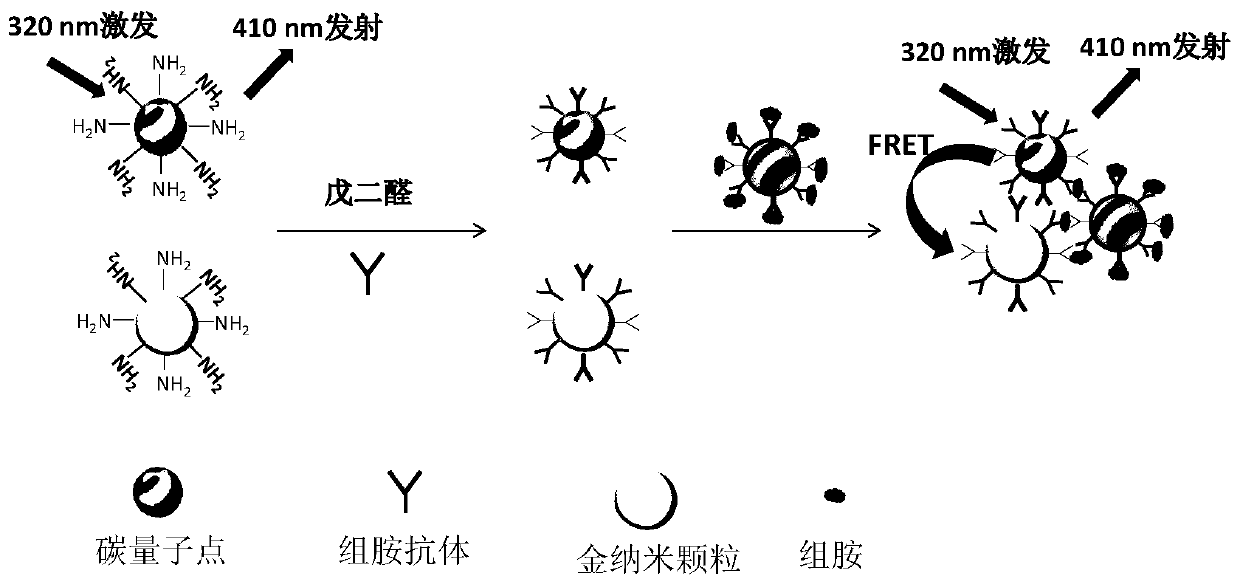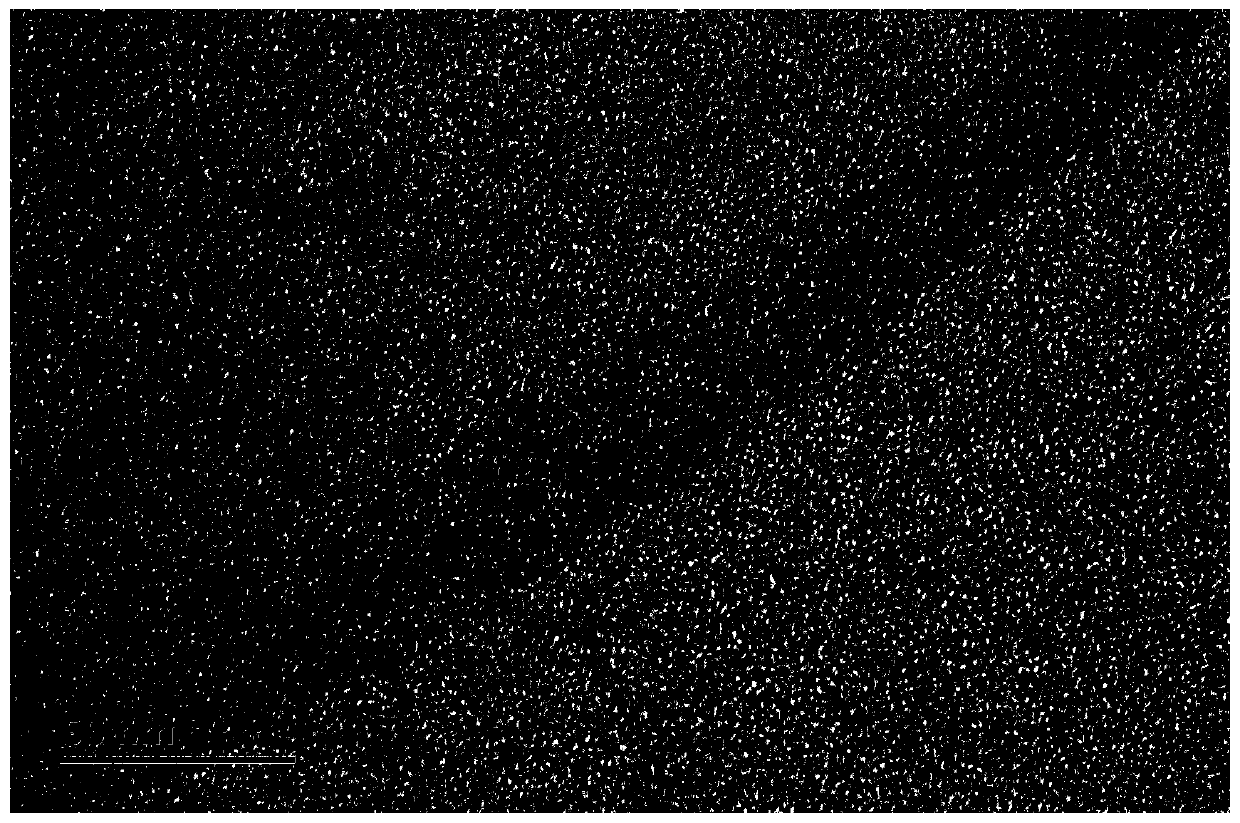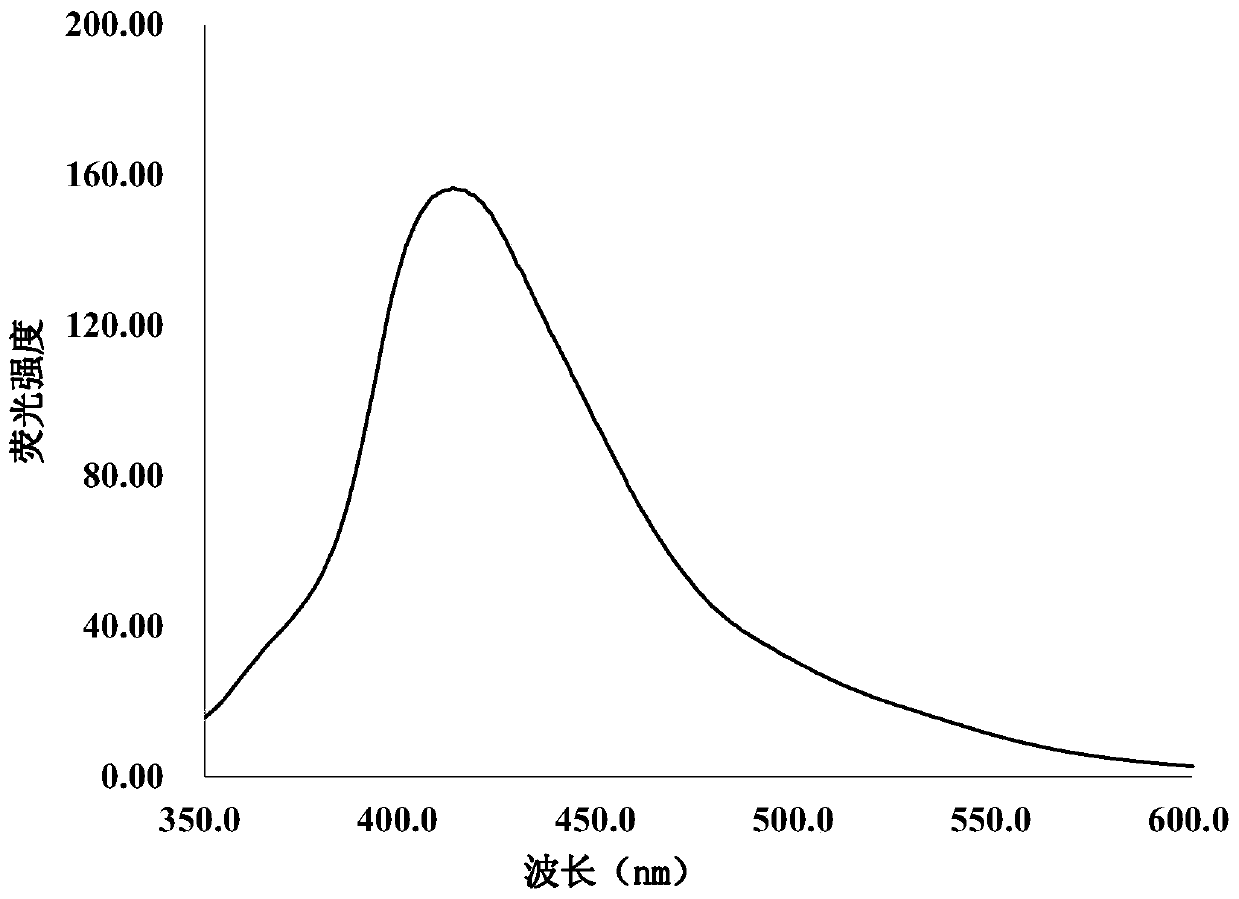Histamine Detection Method of Fluorescence Resonance Energy Transfer Biosensor
A fluorescence resonance energy and biosensor technology, applied in fluorescence/phosphorescence, instruments, measuring devices, etc., can solve problems such as poor speed, low accuracy, and poor sensitivity, and achieve easy modification, easy modification, and good fluorescence stability Effect
- Summary
- Abstract
- Description
- Claims
- Application Information
AI Technical Summary
Problems solved by technology
Method used
Image
Examples
example 1
[0037] Example 1: A method for detecting histamine based on a fluorescence resonance energy transfer biosensor separated by magnetic nanoparticles, comprising the following steps:
[0038] (1) Surface functionalization treatment of graphene quantum dots: 2.1mg / mL histamine antibody was fixed to 1mg / mL surface aminated graphene quantum dots by glutaraldehyde (50%), and stored at 4°C for later use;
[0039] (2) Preparation of gold nanoparticles and surface functionalization treatment: Gold nanoparticles were prepared by reducing perchlorauric acid with sodium citrate. The concentration of the prepared gold nanoparticles was 3nM-10nM and histamine antibody was carried out on the surface of the gold nanoparticles. (2.1 mg / mL) modification. The prepared gold nanoparticles modified by histamine antibody were stored at 4°C for later use;
[0040](3) Surface functionalization treatment of magnetic nanoparticles: Magnetic nanoparticles (0.4 mg / mL) with functional group carboxyl groups...
PUM
| Property | Measurement | Unit |
|---|---|---|
| diameter | aaaaa | aaaaa |
| diameter | aaaaa | aaaaa |
Abstract
Description
Claims
Application Information
 Login to View More
Login to View More - R&D
- Intellectual Property
- Life Sciences
- Materials
- Tech Scout
- Unparalleled Data Quality
- Higher Quality Content
- 60% Fewer Hallucinations
Browse by: Latest US Patents, China's latest patents, Technical Efficacy Thesaurus, Application Domain, Technology Topic, Popular Technical Reports.
© 2025 PatSnap. All rights reserved.Legal|Privacy policy|Modern Slavery Act Transparency Statement|Sitemap|About US| Contact US: help@patsnap.com



